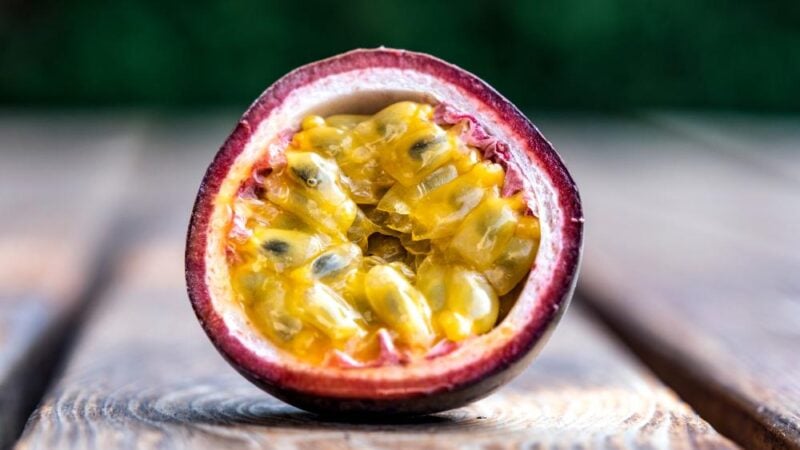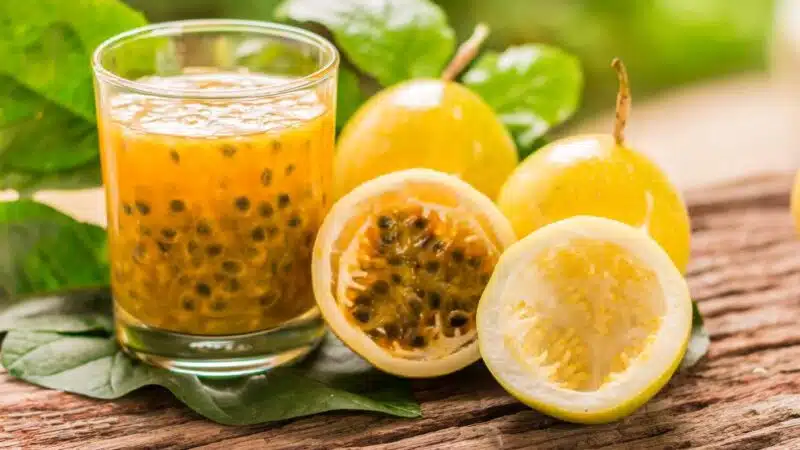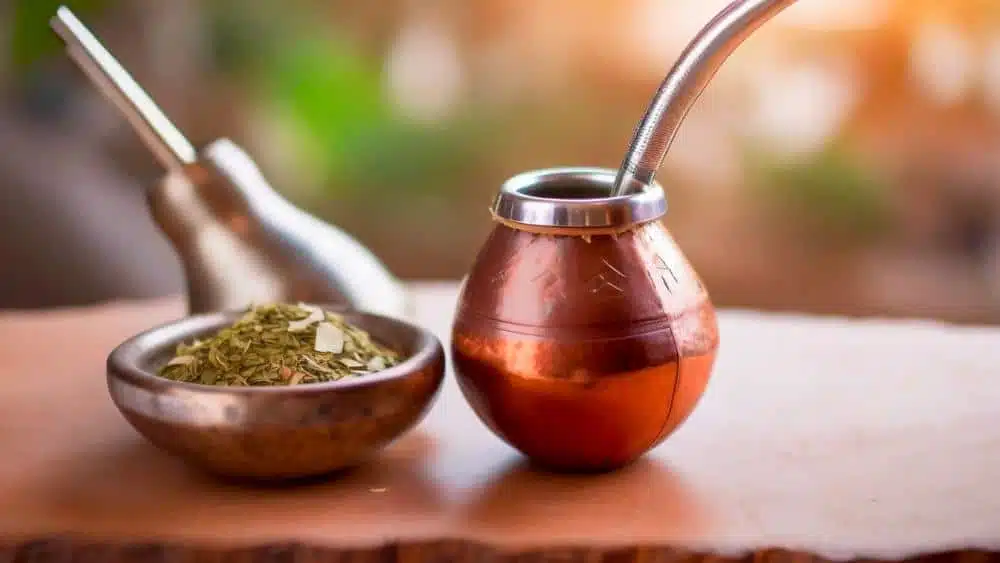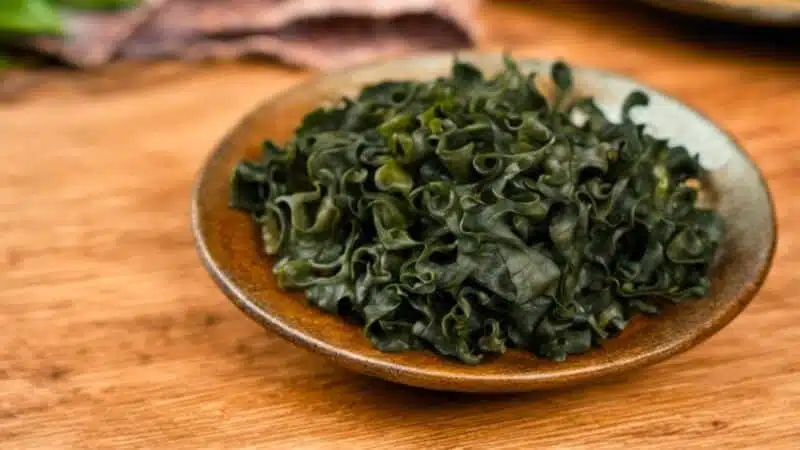Hello, my dear friends! You've probably eaten or drunk something with this little fruit. It's versatile, delicious, and has become quite popular a while ago.
We saw ice creams, juices, and sauces everywhere, bright yellow, often with tiny seeds. By the time we realized it, passion fruit was already part of our everyday language, and it never left.
Of course, but the title talks about passion fruit ! Want to know if they're the same thing? Read on, and we'll tell you everything.
Content table
About passion fruit
Passion fruit is an exotic and delicious fruit native to South America , especially Brazil and Paraguay. This tropical fruit is known for its distinctive appearance, with a rough, wrinkled rind that conceals a juicy, aromatic pulp filled with tiny black seeds.
Passion fruit is prized not only for its unique flavor but also for its high nutrient content . The scientific name for passion fruit is Passiflora edulis, and it is called maracuyá in some Latin American countries .
It is usually oval or oblong in shape and varies in color from yellow to purple, depending on the variety. This fruit grows on vines that attach to structures such as trees or fences and is widely cultivated in tropical and subtropical regions around the world.

Why is passion fruit called passion fruit?
Passion fruit gets its unusual name from the interpretation early Spanish settlers placed on this tropical fruit. When they arrived in South America in the 16th century, they noticed the abundance of Passiflora plants in the region. It has unusual flowers with components the settlers associated with the Passion of Christ.
They have five petals that symbolize the five wounds on Christ's body during the crucifixion, while the flower's corollas resemble the crown of thorns that was placed on Christ's head.
Furthermore, the flower filaments were seen as the lashes Jesus suffered, and the three central stigmata were interpreted as the nails that held him to the cross. The plant's tendrils were associated with Christ's scourging, and the hourglass-shaped fruit symbolized his time on the cross.
Passion fruit and maracuya, the same but with different names
Passion fruit and maracuja are two names often used to refer to the same fruit , but there are subtle regional and botanical differences between them. Botanically, both refer to the fruits of the Passiflora edulis plant, which belongs to the passionflower family.
However, the main difference lies in their regional names. “ Maracuyá ” is the term commonly used in Latin America, especially in countries like Colombia, Venezuela, and Ecuador , while “ fruta de la pasión ” is more common in other countries, such as Brazil and parts of Europe.
Variation in the name can also be related to the diversity of varieties of this fruit. For example, some varieties may be sweeter or more acidic, with different fruit colors and sizes. This can influence the flavor and appearance of the fruit found in the market.
How do you eat passion fruit?
Passion fruit is known for its exotic flavor and is consumed in a variety of ways. To enjoy this fruit, you must first select a ripe one. A ripe fruit will have a wrinkled, wrinkled skin and can range in color from yellow to purple, depending on the variety.
To eat it, cut it in half. Inside is a juicy pulp and many edible seeds , which are the fruit's distinctive, sweet, sour flavor. Eat it with a spoon or scoop the pulp directly from the peel. Some people enjoy eating the seeds along with the pulp, while others remove them.
Passion fruit is used in a variety of dishes and beverages , from juices and smoothies to desserts and sauces. It's also a popular ingredient in baking and pastry, where its distinctive flavor adds an exotic touch to cakes, pastries, and ice cream. It's also used to make jams and sauces for meat or fish.
Follow on Instagram ( here )
and on YouTube that I upload new videos every week ( click here )
Everything you need to know about passion fruit
- Amazonian origin : It is native to the Amazon River basin in South America. It is one of the few tropical fruits that grows in the Amazon region.
- Tropical fruit : It is present in many tropical regions of the world, which is why it is part of this group of particular fruits, like the custard apple , the rambutan and the pitaya .
- Fancy Name : The name "passion fruit" comes from the symbolic interpretation of the early Spanish colonizers. In many places, it's also known as maracuyá, a word that has its roots in the indigenous languages of South America.
- Variety of colors : Passion fruits can range in color, from yellow to purple or even red. Each variety has a unique flavor, ranging from sweet to tangy.
- Abundant seeds : Inside the passion fruit, there are numerous edible seeds. These seeds give it a unique, crunchy texture and are often eaten along with the pulp.
- Uses in cocktails : Passion fruit is a popular ingredient in tropical cocktails. The Passion Fruit Margarita and Passion Fruit Pisco Sour are examples of delicious drinks in which it is used.
- Natural sedative : Some compounds in passion fruit, such as the alkaloid harman, have sedative properties and may help relieve insomnia and promote better sleep.
- Intense aroma : Passion fruit emits a distinctive scent that can be as alluring as its flavor. This scent is often used in personal care products and fragrances.






